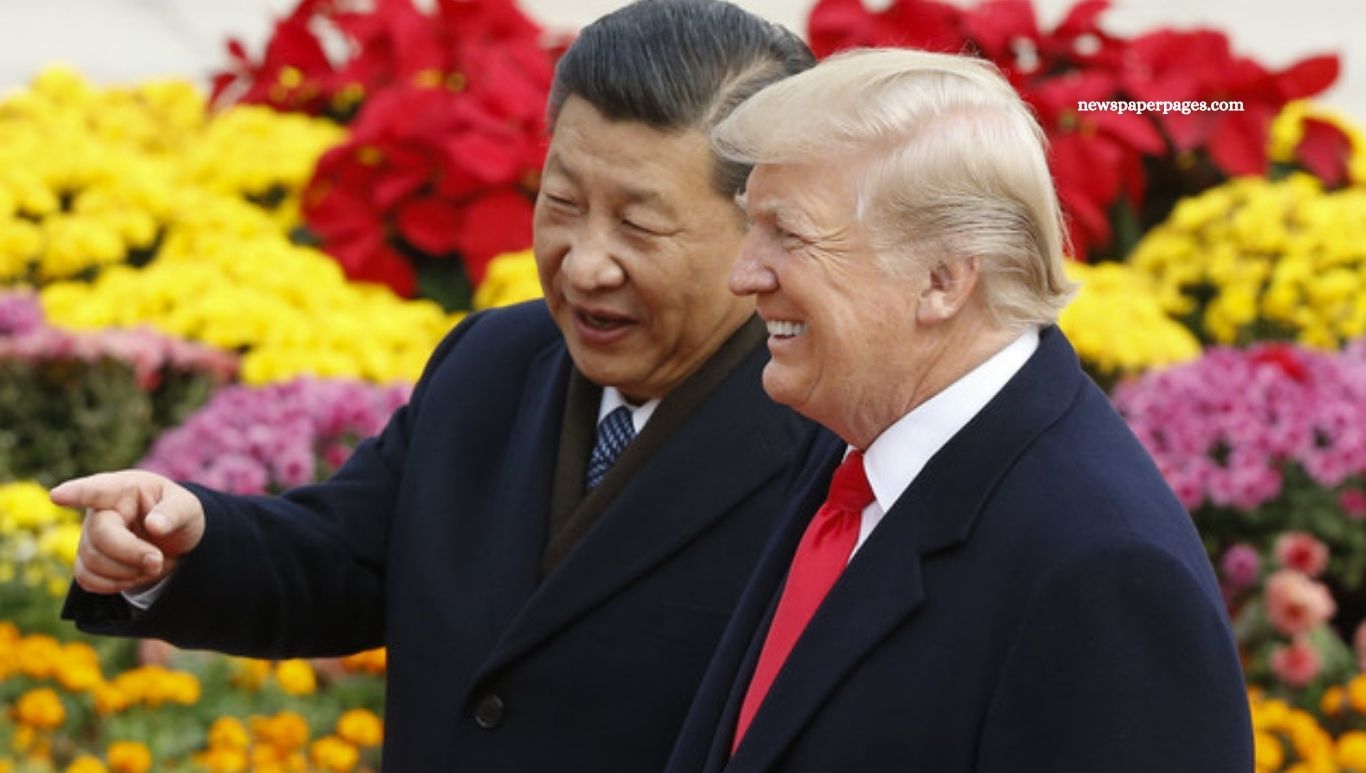The US and China, the world’s largest economies, recently stepped back from the edge of an escalating trade war, opting for a deal that eased tariffs and calmed global markets. Mounting economic pressures, including job losses, supply chain disruptions, and recession fears, forced both nations to reconsider a costly confrontation.
Despite tough rhetoric, both sides acknowledged that a full economic decoupling would harm businesses, consumers, and global trade stability. This strategic retreat signals a temporary pause, not a final resolution, as critical issues remain unresolved. Understanding why the US and China pulled back reveals much about global economic interdependence.
US-China Trade Deal: Why Both Sides Stepped Back from the Brink
President Donald Trump’s agreement to slash tariffs on China sparked a market rally and offered temporary relief for American businesses. Yet, it also delivered a stark reminder: not even Trump can defy economic reality.
Read More: Trump’s Last-Minute Contract Decision Led to Fatal Consequences
The Geneva Breakthrough: A Necessary Retreat
Brokered in Geneva, the US-China deal reduced tariff rates by triple-digit percentages. This truce emerged as fears of a US recession grew. Manufacturing job cuts, shrinking port activity, and rising recession odds pressured both nations to reassess their hardline stances.
Facing a looming trade embargo, Washington and Beijing agreed to de-escalate tensions, though China made no promises to reform its trade practices. Treasury Secretary Scott Bessent clarified the US goal was not a total economic decoupling but a strategic recalibration.
Economic Pressures Forced Compromise
The deal reflects a shared understanding: a full-scale economic split between the world’s largest economies would be devastating. Despite posturing, both sides recognized the costs. China faced factory closures and rising unemployment, while American businesses braced for higher consumer prices and supply chain disruptions.
“Both tried to appear stronger, but this was merely the start of economic pain,” noted Nicholas Borst of Seafarer Capital Partners.
Business Relief, But Challenges Remain
For US corporations, the tariff rollback offers breathing room. However, a lingering 30% tariff on Chinese goods continues to weigh on profits. The US effective tariff rate remains at 17.8%—the highest since 1937, per Yale Budget Lab.
“A 30% cost increase is significant. Someone has to bear it,” warned Harry Broadman, former US trade representative.
Industries from logistics to retail are already feeling the pinch. The 90-day tariff reduction window is expected to trigger a temporary surge in shipments, but lasting supply chain stability remains uncertain.
Supply Chain Strains & Long-Term Implications
The ripple effects of tariffs stretch from dockworkers to small businesses. Inventory stockpiled in anticipation of tariffs will likely deplete by summer, affecting back-to-school retail cycles. Restocking challenges persist, especially if shipping costs rise.
“Consistent supply chains are critical. Tariff threats disrupt long-term planning,” said Kate Nolan of the Northwest Seaport Alliance.
Industry Pressure Drove Negotiations
Sources revealed intense lobbying from automakers and defense contractors concerned over access to rare earth materials. China’s export restrictions succeeded in pushing the US back to the negotiating table, highlighting vulnerabilities in American supply chains.
“China’s leverage created enough pain to force US engagement,” a former Trump official admitted.
China’s Economic Struggles Accelerated Talks
China’s economy was already faltering due to a sluggish property market and weak consumer spending. Trump’s aggressive tariffs hit China’s manufacturing sector hard, causing factory activity to contract and stoking fears of social unrest—a serious concern for the Chinese Communist Party.
“We’re not out to harm China, but they were suffering,” Trump acknowledged, pointing to factory closures and rising unrest.
Frequently Asked Questions
What led the US and China to step back from the brink of a full-blown trade war?
The US and China backed away from escalating tariffs due to mounting economic pressures. Both countries were facing slowing economies, with concerns over job losses, factory shutdowns, and supply chain disruptions. The US, in particular, feared rising consumer prices and shortages of essential goods.
What was the key outcome of the US-China trade deal?
The deal brokered in Geneva resulted in a significant reduction of tariffs between the two nations. Both sides agreed to lower tariff rates by triple-digit percentages, providing temporary relief for businesses and markets.
Did China agree to change its trade practices in the deal?
No, the agreement did not include any promises from China to alter its trade practices. The primary focus was on de-escalating the tariff conflict, not resolving underlying issues related to intellectual property rights or market access.
How did the tariff reductions impact US businesses?
The tariff rollback provided temporary relief, especially for US corporations dealing with increased costs due to tariffs. However, a 30% tariff on some Chinese goods remains, which continues to strain profits. Companies still face challenges from high tariffs, rising shipping costs, and unpredictable supply chains.
What were the economic consequences for both countries before the deal?
Before the deal, both the US and China faced growing economic problems. The US was at risk of a recession, with manufacturing job cuts and shrinking exports. Meanwhile, China struggled with a slowing economy, facing factory closures and rising unemployment due to decreased demand for its exports.
Why did industries like automakers and defense contractors pressure the White House?
Industries such as automakers and defense contractors were particularly concerned about the disruption of their supply chains, especially regarding access to rare earth materials sourced from China. The tariffs created uncertainties, pushing these sectors to advocate for a resolution to the trade conflict.
How did the US-China trade war affect global supply chains?
The trade war created significant disruptions in global supply chains. Tariffs on Chinese goods led to price hikes, affecting industries across the board, from electronics to consumer goods. Ports, trucking companies, and retailers were all impacted by fluctuating tariff rates, making long-term planning difficult.
What’s next after the US and China trade deal?
While the deal provides temporary relief, both countries will continue to negotiate over remaining trade issues. There’s no guarantee that the truce will last, as key disputes, including China’s market practices and intellectual property protections, remain unresolved.
How significant is the 30% tariff on Chinese goods?
The 30% tariff remains a substantial barrier, significantly raising the cost of Chinese imports. While lower than previous tariffs, it’s still high enough to affect the prices of goods for American consumers and businesses, especially in sectors like electronics, retail, and manufacturing.
Could this trade agreement lead to a longer-term resolution?
The agreement marks an initial step toward de-escalation, but it’s unclear whether it will lead to a long-term resolution. Both sides will need to engage in further negotiations to address deeper trade issues and ensure economic stability moving forward.
Conclusion
The US-China trade truce represents a crucial, but temporary, de-escalation in a high-stakes economic conflict. Faced with growing domestic pressures — from rising unemployment to supply chain disruptions — both nations chose pragmatism over prolonged confrontation. However, this agreement is more of a strategic pause than a permanent solution.
Key issues like trade imbalances, intellectual property rights, and market access remain unresolved. Businesses may find short-term relief, but the underlying tensions between the world’s largest economies continue to simmer. Future negotiations will determine whether this fragile peace evolves into a lasting economic partnership or reignites into another trade standoff.

